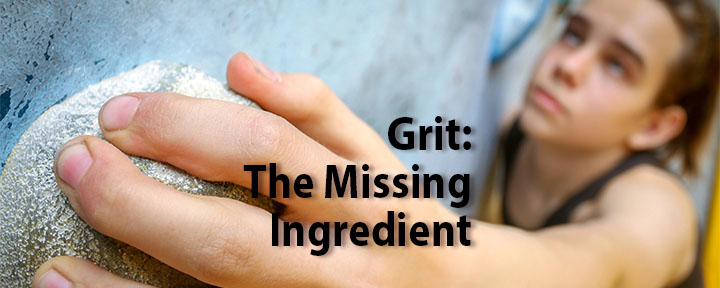
The College Board adds Business and Cybersecurity
to help students thrive in the real world.
For decades, high school students have taken classes to prepare for college — algebra, biology, literature, U.S. history — but far too often, they graduate without knowing how to create a budget, avoid identity theft, or understand how a business works.
That’s finally changing.
The College Board just announced two new Advanced Placement (AP) courses that are relevant to students’ futures: AP Business Principles with Personal Finance and AP Cybersecurity. Both are designed to give students practical skills and to be prepared for life.
“Students need more than test prep — they need life prep.”
Financial Literacy: A Must for Every Teen
AP Business with Personal Finance will cover key topics like entrepreneurship, investment basics, economic systems, and — most importantly — how to manage money.
Right now, fewer than half of American high school students are required to take a financial literacy course before graduating. That means most teens enter adulthood without understanding how credit works, how to save for emergencies, or how to avoid falling into debt.
This AP course will give students the tools to take control of their financial lives early — before the mistakes begin piling up. They’ll learn about loans, taxes, savings, and how to navigate the real-world financial systems they’ll encounter the moment they turn 18.
Cybersecurity: Essential for Everyone
The second new course, AP Cybersecurity, covers how to protect sensitive information and recognize threats like phishing scams, malware, and identity theft. Whether students go into tech, business, healthcare, education, or the arts, they’ll all need to understand how to protect themselves from cyber threats.
This class will teach students how cybersecurity works and why it matters — not just at the personal level, but globally. In an era of increasing digital risk, cybersecurity has become a fundamental part of being an informed, responsible citizen.
It’s About Career AND College
While most AP courses are seen as stepping stones to college, these two also build career-readiness.
AP Business helps students develop leadership, collaboration, problem-solving, and communication skills — qualities every employer looks for. Cybersecurity fosters analytical thinking, precision, and digital fluency.
Together, these courses do more than boost a GPA. They provide practical, hands-on experience with real-world challenges and prepare students for fields that are growing fast and in need of skilled workers.
Equal Access to Critical Knowledge
What’s especially exciting is the potential for equity.
Financial literacy and cybersecurity aren’t taught at home for everyone — and yet they’re essential for everyone. These new AP courses ensure that all students, regardless of background or zip code, can build the knowledge and confidence to make smart decisions in their adult lives.
This kind of curriculum levels the playing field and opens doors to careers many students might never have considered.
What Schools Need to Do Next
It’s now up to schools to offer these courses and support students who enroll in them. That means training teachers, making space in student schedules, and encouraging all types of learners to give these classes a try — not just the “AP kids.”
Parents can help by asking their schools to offer these classes and helping their teens see the long-term value of understanding money and technology.
College prep is still important, but preparing students for life is even more so.

The College Board adds Business and Cybersecurity
to help students thrive in the real world.
For decades, high school students have taken classes to prepare for college — algebra, biology, literature, U.S. history — but far too often, they graduate without knowing how to create a budget, avoid identity theft, or understand how a business works.
That’s finally changing.
The College Board just announced two new Advanced Placement (AP) courses that are relevant to students’ futures: AP Business Principles with Personal Finance and AP Cybersecurity. Both are designed to give students practical skills and to be prepared for life.
“Students need more than test prep — they need life prep.”
Financial Literacy: A Must for Every Teen
AP Business with Personal Finance will cover key topics like entrepreneurship, investment basics, economic systems, and — most importantly — how to manage money.
Right now, fewer than half of American high school students are required to take a financial literacy course before graduating. That means most teens enter adulthood without understanding how credit works, how to save for emergencies, or how to avoid falling into debt.
This AP course will give students the tools to take control of their financial lives early — before the mistakes begin piling up. They’ll learn about loans, taxes, savings, and how to navigate the real-world financial systems they’ll encounter the moment they turn 18.
Cybersecurity: Essential for Everyone
The second new course, AP Cybersecurity, covers how to protect sensitive information and recognize threats like phishing scams, malware, and identity theft. Whether students go into tech, business, healthcare, education, or the arts, they’ll all need to understand how to protect themselves from cyber threats.
This class will teach students how cybersecurity works and why it matters — not just at the personal level, but globally. In an era of increasing digital risk, cybersecurity has become a fundamental part of being an informed, responsible citizen.
It’s About Career AND College
While most AP courses are seen as stepping stones to college, these two also build career-readiness.
AP Business helps students develop leadership, collaboration, problem-solving, and communication skills — qualities every employer looks for. Cybersecurity fosters analytical thinking, precision, and digital fluency.
Together, these courses do more than boost a GPA. They provide practical, hands-on experience with real-world challenges and prepare students for fields that are growing fast and in need of skilled workers.
Equal Access to Critical Knowledge
What’s especially exciting is the potential for equity.
Financial literacy and cybersecurity aren’t taught at home for everyone — and yet they’re essential for everyone. These new AP courses ensure that all students, regardless of background or zip code, can build the knowledge and confidence to make smart decisions in their adult lives.
This kind of curriculum levels the playing field and opens doors to careers many students might never have considered.
What Schools Need to Do Next
It’s now up to schools to offer these courses and support students who enroll in them. That means training teachers, making space in student schedules, and encouraging all types of learners to give these classes a try — not just the “AP kids.”
Parents can help by asking their schools to offer these classes and helping their teens see the long-term value of understanding money and technology.
College prep is still important, but preparing students for life is even more so.

Every parent wants their child to be happy. We want to protect them from disappointment, shield them from failure, and make sure their self-esteem is never bruised. But in doing so, we may be doing them a long-term disservice. As well-meaning as helicopter parenting may seem, it’s often a barrier to the development of one of the most crucial life skills: grit.
Grit, as defined by psychologist Angela Duckworth, is the combination of passion and perseverance for long-term goals. It’s the drive that keeps your child practicing piano even when they’d rather be outside, trying out for the team again after being cut, or competing in the science fair when their competition is the parents of their peers. It’s what transforms a child into a confident, stable, and successful adult.
Children aren’t born with grit. It’s cultivated through life experiences that often consists of adversity. And that’s where many parents get lost. In trying to prevent our children from failure, we inadvertently rob them of the opportunity to learn how to bounce back, to adapt, and to push through. These are the very skills that they need to build confidence and resilience.
Consider a child who loses a soccer game. A helicopter parent might blame the referee’s call, question the coach’s training, or offer an immediate treat to soothe the sting of losing. A grit-building parent, on the other hand, might ask their child how they felt, discuss different strategies they could try next time, and plan to practice techniques that can make them better players. The first approach teaches that setbacks are caused by others and encourages the blame game. The second shows that setbacks are part of life and stimulates creative strategies to improve.
Today, children are often overscheduled, overstimulated, and overprotected. Many don’t have the time to simply work at something for the sake of getting better. They’re shuttled from activity to activity, with adults managing every detail of their lives. But when do children learn how to manage their time? Set priorities that are important to them? Stay up late to finish a project or wake up early to meet a deadline?
If our children don’t struggle, they won’t learn how to persevere and successfully reach their goals. And when they face inevitable challenges in high school, college, careers, or relationships, they may crash and feel like failures. We can’t fix their problems forever, but we can prepare them to find solutions and enjoy the feeling of overcoming obstacles with grit.
So, how can parents begin to foster grit?
1. Let them fail: Don’t rush to rescue them from every mistake. Whether it’s forgetting their homework or getting a poor grade, let them face the consequences. Offer support, and help them rethink their strategies.
2. Encourage long-term commitments: Whether it’s a sport, instrument, or project, help them stick with it even when it gets tough or boring. Grit is built through sustained effort over time.
3. Model perseverance: Share your own struggles and how you overcame them. Let them see that setbacks are normal and surmountable.
4. Focus on effort, not outcome: Praise the hard work, not just the win. When kids learn that effort matters more than perfection, they’re more likely to keep trying.
5. Teach time management: Instead of managing their schedules, guide them in using planners (G Cal), blocking off time to complete their tasks, and prioritizing their activities. These skills are essential for success and independence.
Ultimately, grit is what helps kids manage their world – the good, bad, and ugly. It’s not about being tough; it’s about being passionate and resilient. As parents, our job isn’t to pave the road, but to prepare our children for the journey—bumps, detours, and all.
Let’s stop fearing failure, instead, let’s embrace it as the teacher it is. Because in the end, the grit our children gain today will become the backbone of their success tomorrow.

As a lifelong educator and a stickler for grammar, I’ve always valued precise language. I believe clarity matters—especially when teaching, writing, or communicating across generations. So, I’ll admit that the use of they/them as a singular pronoun for non-binary individuals has left me a little… grammatically disoriented.
Let me be clear: I fully support people’s right to define who they are and to ask others to respect that identity. For young people—especially those exploring gender beyond the traditional binary—having the power to say “these are my pronouns” is empowering and important. I respect that. I support that. And I believe our schools, workplaces, and communities should too.
But here’s the dilemma: they and them have always been plural pronouns in standard English. When someone says, “They’ll be joining you at 3 p.m.,” my mind naturally imagines more than one person walking through the door. That’s what I was taught. That’s what I’ve taught others. And that’s what causes confusion—not out of disrespect, but out of habit and grammatical instinct.
In recent years, I’ve had to catch myself—more than once—after misunderstanding whether one person or a group was being referenced. And I’ve heard the same concern from other educators, parents, and colleagues. The confusion isn’t about rejection of identity; it’s about language systems catching up to social change.
My 40-year-old daughter recently cautioned me that voicing this opinion publicly could upset people who’ve fought hard for recognition and inclusion. I understand that. This article isn’t meant to dismiss or criticize anyone’s chosen pronouns. Rather, I hope it opens the door to a respectful conversation about how we use language to support identity and maintain clarity.
Because isn’t that what communication is about? Making sure that our message is both respectful and understood?
The truth is, English is constantly evolving. We’ve adapted before. You used to be strictly plural. Now we use it for individuals all the time. And the singular they actually has historical roots in the writings of Shakespeare and Jane Austen. Still, today’s usage of they/them as a personal pronoun is new for many people, and it comes with some practical challenges.
That’s why I wonder: might there be a future where we create—or adopt—a new gender-neutral singular pronoun? One that clearly refers to one person and avoids the grammatical confusion that “they” can cause?
Interestingly, some individuals already use gender-neutral pronouns like ze/hir/hirs. Pronounced zee, heer, and heers, these pronouns work similarly to he/him/his or she/her/hers. For example:
• “Ze is a teacher.”
• “I spoke to hir yesterday.”
• “That book is hirs.”
These alternative pronouns have not yet gained mainstream usage, but they offer a possible path forward—language that is both inclusive and less ambiguous in terms of number. Perhaps, with time and broader awareness, they could help bridge the gap between clarity and respect.
Of course, any shift like this takes time. Language doesn’t change overnight—especially when it’s tied to something as personal and sensitive as identity. And any new pronouns must be chosen, embraced, and led by the communities who use them.
In the meantime, I believe there’s a shared responsibility. For those of us who grew up in a more rigid grammatical world, it’s important to learn, adapt, and make space for gender diversity. Using someone’s correct pronouns is a small act of kindness that can give comfort. For those who use they/them, offering context or clarifying language when helpful (“My friend uses they/them pronouns and will join us later”) can reduce misunderstanding without compromising identity.
This isn’t an either/or issue—it’s a both/and. We can respect identity and advocate for clear communication. We can support the use of they/them now, and still have a thoughtful conversation about how inclusive language can evolve in ways that serve everyone.
Ultimately, language is a bridge. Let’s build it together—with compassion, with clarity, and with the humility to keep learning.

For the past five years, Central Fire has actively engaged with Firewise communities to educate homeowners about defensible space, evacuation routes, road clearances, and communication via MURS radios. They’ve visited homes, walked properties, investigated egress routes, recommended address, street, and fire truck signs, and identified problem areas in Zone 0 (0-5 feet), Zone 1 (5-30 feet), and Zone 2 (30-100 feet). As a Firewise leader, I’m grateful for their guidance, which has provided invaluable tips on protecting our homes from wildfires.
Now, Central Fire is stepping up its efforts. With the increasing devastation caused by wildfires across California, CalFire has mandated that fire departments enforce Zone 0 regulations. This means that Central Fire—and all fire departments across California—will no longer overlook combustible materials within five feet of homes. Instead, they will conduct unannounced inspections and issue citations for noncompliance. This is a significant step forward in ensuring fire safety for our communities.
California’s Wildfire Protection Laws: AB 3074 & SB 504
In response to escalating wildfire risks, California enacted AB 3074 (2020) and SB 504 (2024), requiring homeowners to take specific fire-hardening measures:
• AB 3074 (2020): Introduced the “ember-resistant zone”, requiring homeowners to maintain a five-foot buffer around their homes, free of flammable materials.
• SB 504 (2024): Strengthened enforcement mechanisms, empowering fire departments to issue fines for noncompliance.
By adhering to these laws, homeowners can significantly reduce the risk of wildfire damage and contribute to a fire-resilient community.
Creative Fireproofing Solutions for Zone 0
Retrofitting your home for wildfire resistance doesn’t have to mean sacrificing aesthetics. There are innovative ways to eliminate combustibles while maintaining visual appeal:
• Replace hedges with decorative tile or stone walls for an elegant and fire-safe boundary.
• Cover wooden planters with tile or stone to maintain a lush garden without fire risk.
• Use fire-resistant potted plants, such as succulents, arranged creatively to enhance curb appeal.
• Repurpose tile and marble samples from local stores to create non-combustible, artistic garden features.
Key Steps for Retrofitting Your Home’s Exterior
1. Ember-Resistant Zone (0-5 Feet from Home)
• Remove all combustible materials such as mulch, dried leaves, firewood, and wooden furniture.
• Replace flammable landscaping (juniper, pine, bamboo) with fire-resistant plants like succulents or rock gardens.
• Install non-combustible hardscaping (concrete, gravel, stone walkways).
• Use metal or Class A fire-rated roofing materials instead of wood shake shingles.
2. Fire-Resistant Siding and Walls
• Replace wooden or vinyl siding with non-combustible materials like fiber cement, stucco, or metal.
• Seal gaps and cracks in siding and foundations with fire-resistant caulking to prevent ember intrusion.
• Install fireproof skirting around raised foundations and decks to prevent embers from accumulating underneath.
3. Defensible Space (5-100 Feet from Home)
• Maintain defensible space by clearing dry vegetation and trimming overhanging tree branches at least 10 feet from roofs.
• Store firewood and propane tanks at least 30 feet from structures.
• Space trees at least 10 feet apart and keep grass mowed to less than 4 inches.
4. Fire-Resistant Windows and Doors
• Upgrade to tempered glass windows, which are more resistant to heat and flames.
• Install metal mesh screens (1/16-inch to 1/8-inch) on vents to prevent embers from entering attics and crawl spaces.
• Use non-combustible or fire-rated doors, such as those made from metal or solid-core wood.
5. Roofing and Gutter Protection
• Opt for a Class A fire-rated roof (asphalt shingles, metal, clay, or concrete tiles).
• Install metal drip edges to protect exposed roof sheathing.
• Use gutter guards or keep gutters clean to prevent dry debris from catching embers.
6. Fire-Resistant Decking and Fencing
• Replace wooden decks with fire-rated composite materials or metal.
• Use metal fencing near structures instead of wood, which can easily ignite.
7. Water Supply and Fire Tools
• Ensure easy access to a water source, such as an outdoor hose with a high-pressure nozzle.
• Keep fire-resistant tools (rake, shovel, and metal buckets) on hand for emergency use.
Final Thoughts
Fire safety is no longer optional—compliance with California’s wildfire protection laws is now being actively enforced. Taking steps to eliminate combustible materials within five feet of your home and implementing fire-resistant upgrades will help protect your property, ensure regulatory compliance, and strengthen community resilience.
By sharing before-and-after photos of creative, fire-safe retrofits, we can inspire and educate other homeowners. Together, we can make our neighborhoods safer from wildfires and create homes that are both beautiful and fire-resistant.
 read more
read more

It used to be that families would have a large shoebox filled with printed photos meant for albums that never got made. Today, with cell phones capturing countless pictures and cloud storage like Google Photos saving them for us, the same thing is happening. While the photos are automatically dated, they often lack important context—like what event they capture, who is in them, or the story behind the staged smiles.
When I was raising my two daughters, I kept an informal journal of their lives. At first, I wrote daily because things changed so quickly—eating schedules, sleep patterns, and milestones happened all the time. Sometimes, I’d ask my daughters to dictate their own stories to me, giving them an opportunity to share their thoughts. When they resisted, I’d sit my husband down or include friends to capture snapshots of their lives through quick notes.
Years later, after they left for college, I revisited the journal and found details I had forgotten. I felt so grateful to have recorded those little moments. As a project, I digitized photos, added certificates, scanned artwork, and even included covers of school reports. I published their biographies—Nicole’s spanned 1496 pages in 3 volumes, and Jaclyn’s stretched 1768 pages across 4 volumes. These biographies became family heirlooms, treasures for my daughters and now for Jaclyn’s son, Asher, who is 9 months old.
This year, I’ve decided to create an annual biography for Asher, similar to what I did for his mother. Writing a yearly summary allows me to start sooner and ensures I capture memories while I can. Here’s how I’m organizing Asher’s biography—a simple and meaningful system you can use, too!
________________________________________
1. Organize and Rename Photos
With phone cameras, we have an abundance of candid photos unlike in the past. To preserve and organize them, I recommend renaming photos with a system that includes key details:
Year Month Date Who What Where Example: 2024 12 15 Asher first food banana Santa Cruz.
Next, place these photos in specific folders named after events: Example: 2024 12 15 Asher visits Thanksgiving Santa Cruz.
This method allows you to search by event (like Thanksgiving) or activity (first food). Once you’ve organized the photos, transfer them to a hard drive on your computer for safekeeping and back them up on an external drive.
________________________________________
2. Create a Journal
Use Google Docs (or your preferred word processor) to write quick, snapshot entries about your child or grandchild. Keep it simple so you don’t feel overwhelmed—even short, heartfelt notes matter.
Example of a Journal Entry: Today, Asher is figuring out the tricky process of crawling. I could see his little brain working hard to coordinate his hands and knees to move toward his favorite toy. When he got tired—and he must have been exhausted—he just laid his head down and rolled over. So adorable!
Tips for Enriching the Journal:
• Share the Google Doc with family and friends so they can contribute their thoughts, stories, or observations. Ask them to sign their notes so you know who wrote what.
• Include small snippets like funny quotes, milestones, or observations from daily life.
________________________________________
3. Combine Photos and Journal Entries
Bring the journal to life by adding photos that match your entries.
• Resize and crop photos so they fit nicely into your document.
• Add visuals like book covers of stories they love, certificates, or scans of artwork to enrich the journal.
• Family and friends can add their own photos or images to the document as well.
________________________________________
4. Publish the Annual Biography
At the end of the year, take time to edit the entries and clean up the layout. Once you’re happy with the final version, publish it using an online printing service (like Shutterfly, Mixbook, or Blurb). Print a copy for your child or grandchild and start a tradition they can look forward to receiving every year.
________________________________________
Why Start Now?
Capturing your child’s story doesn’t have to be overwhelming. By starting with simple notes, organized photos, and an annual publication, you’re creating a keepsake they’ll cherish forever. It’s a wonderful way to preserve memories and celebrate life’s fleeting moments—the perfect gift to begin the new year.
Start today and give your child the gift of their story!


The holiday season is often synonymous with gift-giving, but for many, the pressure to buy the perfect present has overshadowed the true spirit of the season. If you find yourself stressed about shopping, worried about your finances, or surrounded by gifts that you don’t want or need, you may be ready to rethink this tradition.
Here’s how you can stop giving gifts for the holidays while still celebrating with your friends and family in more meaningful ways.
1. Communicate Early and Honestly
The key to shifting away from gift-giving is to let your family and friends know your intentions well in advance. Explain your reasons:
• Stop worrying about how much to spend on gifts.
• Focus on quality time, not material goods.
• Aim for financial freedom.
• Simplify the holidays and reduce stress.
A heartfelt conversation can help people understand that your decision isn’t about withholding but about creating a more intentional holiday.
2. Offer Alternatives to Gift-Giving
Gifts are often forgotten, but experiences create lasting memories. For your family, create a holiday bucket list of fun activities to do together:
• Game or Movie Night: Spend time together playing games or watching classic holiday films.
• Nature Outings: Take a hike, walk on the beach, or go bike riding together.
• A Holiday Potluck: Gather friends and family for a meal where everyone contributes a dish.
• Acts of Kindness: Involve your kids in choosing a charity to donate to or volunteering as a family. Helping others during the holidays can teach them the value of generosity and gratitude.
3. Focus on Handmade and Heartfelt Gestures
If you feel that skipping gifts entirely might be too drastic, consider replacing store-bought presents with homemade or thoughtful gestures. Examples include:
• Making lip balm or lotions.
• Organizing a photo collage of special moments.
• Baking cookies or other treats to share.
4. Set Boundaries on Gift-Giving
If you’re part of a family or social circle that clings to gift-giving, propose a compromise:
• Draw names for a Secret Santa so everyone buys just one gift.
• Set a strict budget for presents to reduce financial stress.
• Focus on gifts for children only (and put an upper limit cap), if applicable.
5. Model the Change
Be prepared to encounter some resistance, especially if gift-giving is deeply ingrained in your family or friend group. By showing how meaningful and enjoyable a gift-free holiday can be, you may inspire others to follow suit in future years.
6. Reframe the Purpose of the Holidays
Redirect the focus from presents to presence. Remind loved ones that the holidays are about being together, appreciating our blessings, and remembering family and friends who are no longer with us. Share stories, cook meals, and create new memories.
7. Practice Gratitude
If you’re worried about disappointing others, remember that the holidays are what you make of them. Take time to appreciate the relationships, health, and opportunities you already have. Gratitude is the best gift you can give to yourself and those around you.
Final Thoughts
Stopping gift-giving for the holidays doesn’t mean losing the joy of the season—it means rediscovering it. By focusing on connection and experiences, you can create traditions that are less about materialism and more about what really matters.
Take the first step this year and see how liberating (and joyful) a no-gift holiday can be. You might just find it’s the best gift you’ve ever given yourself.

Last month, TEDxMeritAcademy hosted an inspiring event featuring seven talented teen speakers who showcased their innovative projects aimed at making a positive impact on the world. This year, the event was hosted at the 418 Project in Santa Cruz, CA. Each young visionary shared their unique ideas, from groundbreaking environmental solutions to cutting-edge technologies and social initiatives. Their presentations captivated the audience, highlighting the power of youth-driven innovation and the potential for these projects to transform communities and industries alike. The event served as a platform for these extraordinary teens to inspire others to think creatively and take action toward meaningful change.
Brandon Xu
The 2020 Northern Complex Fire destroyed 318, 935 acres of land and turned the skies over Northern California a dark orange from chemicals trapping carbon dioxide particles. As a middle schooler, Brandon Xu vividly remembers the acrid air and wondered what could be done to mitigate these types of natural disasters in the future. As a senior, he investigated whether mycelium, fungal threads that grow in the soil beneath mushrooms, could be used to create a drywall alternative that holds up to construction standards. Not only will his mycelium wall be better in disaster situations, it also reduces carbon emissions.
Miles Elliott
Globally, we have reached a staggering 400 million tons of plastic consumption each year. Americans use an average of .75 pounds of plastic on a daily basis–that’s like throwing away over 35 pens worth of plastic every day. While some replacement bioplastics exist, Miles Elliott, a senior in the Bay Area, wanted to see if he could add to the conversation by focusing on plastics for household use. He created a bioplastic film alternative made from potato, alfalfa, and kelp and discovered that not only was it a viable replacement, but it even looked as clear as the “real” thing!
Abigail Mathew
Since the COVID-19 pandemic, anxiety rates have risen by 25% and one in five teens experiences symptoms of anxiety or depression. When confronted with growing anxiety among her peers, sophomore Abigail Mathew used her enthusiasm for homeopathic remedies to explore an alternative medication without some of the harsh side effects of prescription anxiety meds. Her research led her to passion flower, a plant native to the southeastern US, that has been used in conjunction with other herbs as an anxiety treatment before, but never studied independently. Preliminary studies show a positive correlation between heart rate reduction and passion flower use.
Katie Luong
It is no secret that the education system in the United States is chronically underfunded. Schools across America suffer from massive teacher shortages, a lack of up-to-date technological resources, and a problem with both physical and mental student safety. To solve these problems, Bay Area senior Katie Luong looks to add to the Department of Education budget through a system of taxing the wealthiest 1%, 0.1%, and 0.01% of Americans using a sliding scale based on income. Her formula would see a negligible percentage of those Americans’ taxes being used to benefit millions of children across the country.
Isha Bajpai
Stories connect us, but with the growing digital divide between generations, it is harder for those narratives to be shared. More importantly, there is not a straightforward method for saving those stories for future generations. In an effort to “store the past in the future,” senior Isha Bajpai created Video Time Capsule, an app designed to make it easy for generations to share stories from their past without the confusion present in social media platforms. Inspired by stories of Isha’s family from India, the app provides prompts to help people feel comfortable sharing the stories that make them uniquely themselves.
Kaaviya Aravind
For years, Delhi has been labeled as one of the most polluted cities in the world as a result of burning waste, unchecked vehicle emissions, and firecrackers lit during religious celebrations. But while the air quality is so poor that at times it’s like smoking thirty cigarettes a day, small changes have been made and the daily AQI decreased by 29.4% from 2022 to 2023. Inspired by the communal changes made in her hometown, senior Kaaviya Aravind created PlanetPoints, an app that helps users see how their own small efforts towards sustainability can pay off in a big way.

The best part of the new school year is that the teachers are fresh and enthusiastic, and the kids are glad to be back at school where they can reconnect with friends they hadn’t seen all summer. Everyone is optimistic — Enjoy it while it lasts!
And, every school has Back to School Nights at this time of year to give parents the opportunity to meet their kids’ teachers and get a little glimpse of what to expect for the school year. Some teachers layout their plans and give parents a heads up about big projects. Others share with parents grading rubrics — how they calculate grades — and tips on how to maximize their children’s chances of getting A’s or B’s.
Here are some questions to think about before you go to Back to School Nights.
Elementary School
1. What are some of the major skills that our kids will learn this year to prepare for the next grade?
2. What can we as parents do to reinforce the skills that you’re teaching in the classroom?
3. Is your class divided into different tracks (faster vs slower), and if it is, what can a parent do to help their child get into the faster track?
Middle School
English/Language Arts:
1. What parts of English grammar will the kids learn this semester?
2. Will students be learning how to write essays?
3. What books and how many books will the kids be reading this year? Will they be unabridged books or synopses?
Math/Science:
1. I would like to be sure that my child gets a solid foundation in math facts before he/she starts algebra. What is the plan to build this foundation this year?
2. What areas of science will be covered this year? How many labs will the students participate in?
3. What can we do as parents to supplement class learning to ensure that our kids will be ready for Honors or AP science in high school?
High School
English/History:
1. Will students learn vocabulary that will help prepare for the SAT or ACT?
2. How many essays will the students write, and will you be editing them (as opposed to peer edits)?
3. What books and how many books will the students read this year? Will students be required to write essays about their readings? How many drafts will the students write?
4. Will the students write research papers in either English or History classes? How will they learn how to write the many essays that are required in college?
Science:
1. How many labs will the kids do this semester/year? Will they be required to write complete lab reports?
2. Will their preparation in your class prepare the students to enter introductory science classes in college?
3. Can you recommend how the students can use outside-of-the-class resources to build a strong science foundation to prepare for success in college?
Modern Language:
1. What can we do to supplement classroom learning to encourage our kids to become fluent in the language?
2. Will the students be writing paragraphs or essays?
Use this time at Back to School Night to understand more about what your child will be learning — and not learning — this year. Armed with this knowledge, you can support your child by supplementing with programs that will fill the gaps. Remember, you’re your child’s only advocate!

Now that it’s been 4 years since COVID forced all schools to conduct online lessons and create tests to evaluate students in remote classrooms, students have had plenty of time to find ways to cheat on exams. It used to be that a cheater might write down formulas or facts on their forearms and glance at them when the teacher wasn’t looking. Or, friends who took the class before yours would tell you some of the questions on the test so you had time to get the answer before it was your turn. Other more sophisticated students would bribe the student TA (teacher’s assistant) to change their scores in the class grade book.
Today, students pay Exam Rabbit, a contract cheating company, about $250 to take the exam for them. For the student, it’s really simple. All they need to do is have their student ID, be in a secure location (without other computers, tablets, and phones), and pretend to take the test. Teachers in high school and professors in college use AI-powered proctoring services such as Honorlock and Proctorio to detect if the student glances away from the screen for a prolonged period of time – presumably to look at their notes, books, or other sources that aren’t allowed during the test. As long as the student pretends to take the test by reading the questions and staying engaged, most proctoring services will not detect cheating.
Exam Rabbit and other cheating services set up a VPN to hide their location (usually outside the US) and the remote-controlled platform that allows them to take control over the student’s computer. The cheating service has experts who answer the questions directly on the student’s computer. As long as students stay focused on their screens and don’t act suspiciously, students can get away with cheating on these online tests.
Studies show that students cheated twice as often in 2021 than they did in 2020 at the start of the pandemic. 77 percent of professors believe that students are more likely to cheat in online testing than in brick and mortar classrooms. This is problematic because 50 percent of courses at many colleges are fully online and 75 percent of students now take at least one online class each year.
Not all cheating students pay $250 to Exam Rabbit but many cheat by sharing their login information with a cousin or friend who then takes the exam for them. Donald Trump allegedly paid someone to take the SAT for him so he could get into Wharton. This kind of cheating has been going on for decades.
While cheating is wrong on so many levels, new developments may make students rethink how they cheat and whether or not it’s worth the risk. When they use Exam Rabbit or any program that takes over your computer, these companies can blackmail the student because they have video footage that shows the student’s image and their student ID. This would mean expulsion at their school or college and that video footage could be damning for careers and employment in the future if it were released on social media. Companies like Exam Rabbit have blackmailed students whose payments bounced by threatening to release the video of them cheating on the exam.
In a time where cancel culture can destroy reputations, students should consider the ramifications of blatantly cheating and having digital records that tie themselves to these unethical acts. Wouldn’t it be better to meet with the professor or teacher during office hours to learn the material? If the course is too advanced for the student, they always have the option to drop the course and retake it at another time. If college is too demanding, maybe the student should consider other career options. College is expensive and the ROI is not always positive. Parents, if your child is cheating on exams, take this opportunity to reevaluate their goals and support them in choosing a new direction if that is what they need. And above all else, let’s instill ethics and honesty in our children.

Okay, I know this sounds impossible, but I actually got my kids (and husband!) to VOLUNTEER to spring clean my house! No, I didn’t bribe them, or threaten them.
So here’s how I did it: I made a list of all of the things that needed spring cleaning: organizing closets, rearranging gardening supplies, cleaning out the fridge, cleaning windows – you get the idea. Spring cleaning can feel daunting because there is so much that can be done, so pick 3-4 things that are your top priorities for each room. The rest you can do in another spring cleaning day later or even next year. By listing specific tasks for my family, each one sounded reasonable.
Careful how you make your lists. Instead of writing “Organize Play Room,” I wrote “Find all Legos and place in Lego Bin,” “Gather all books and place on bookshelves,” “Put old toys in box for Goodwill,” etc. Be specific so they understand exactly what needs to be done.
3 Tips for Different Rooms:
For bedrooms: “Fill Goodwill box with clothes that don’t fit anymore,” “Remove everything from under your bed and put them where they belong,” and “Clear off your desk.”
For bathroom: “Wipe down toiletries in drawer,” “Stack and organize toilet paper, tissues, and shower supplies,” and Clean the toilet.”
For kitchen: “Organize utensils drawer,” “Clean fridge and freezer,” and “Clean stove.”
For garden: “Weed planters,” “Organize gardening tools,” and “Plant seeds in little pots.”
For garage: “Fill Goodwill box with stuff we don’t use,” “Hang hooks or build shelves for stuff,” and “Caulk edges around garage.”
I created a list that could be completed in a reasonable amount of time. It felt good just to make the list of all the things I’d been wanting to clean and organize over the winter. Then, I called a family meeting on a Sunday morning and served up everyone’s favorite breakfast — huevos rancheros!
This wasn’t a “bribe”, exactly, but it helped when setting them up to volunteer for spring cleaning. I WAS PREPARED. I put up giant Post-it Notes on the walls and listed all of the individual things that needed to be cleaned. Instead of demanding that they participate, I started with a perk: I told them that we would be hosting a party for family and friends in a month, and we needed to get our house and property in tip-top shape for our visitors. They were thrilled to hear about our future guests and we talked about fun things to do with them. So far, so good.
Then, I asked them to write their names next to the tasks listed on the Post-it Notes that they would like to do. When they saw something that they hated doing — like cleaning toilets or washing out garbage cans, they jumped up to claim the things that they considered easier jobs. What happened next was shocking. They actually signed up for EVERYTHING ON MY LIST!
When they asked me why I didn’t sign up for anything, I told them that I’m responsible for making sure that they have all the cleaning supplies, organizational materials, and guidance they need for all tasks. Couldn’t believe it but they bought it! Phew! I didn’t need to nag about getting it done because they all knew the deadline — the weekend of our party!
On our family calendar (and our family Google Calendar), I blocked off 3 hours each weekend for the family to work on their spring cleaning tasks. I made sure that they had their cleaning supplies, boxes for Goodwill, and new accessories (shelves, hooks) so there were no excuses. I also took lunch orders to give them something delicious to look forward to at the end of their work days. Tossing in pizza and ice cream goes a long way!
And that’s how you get your family to VOLUNTEER to do chores!
